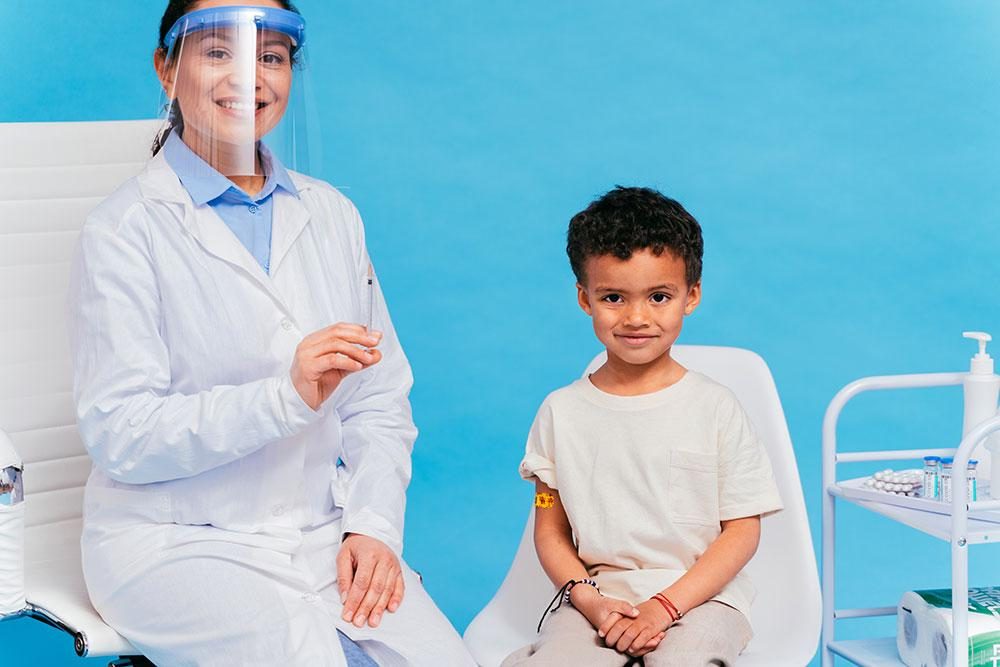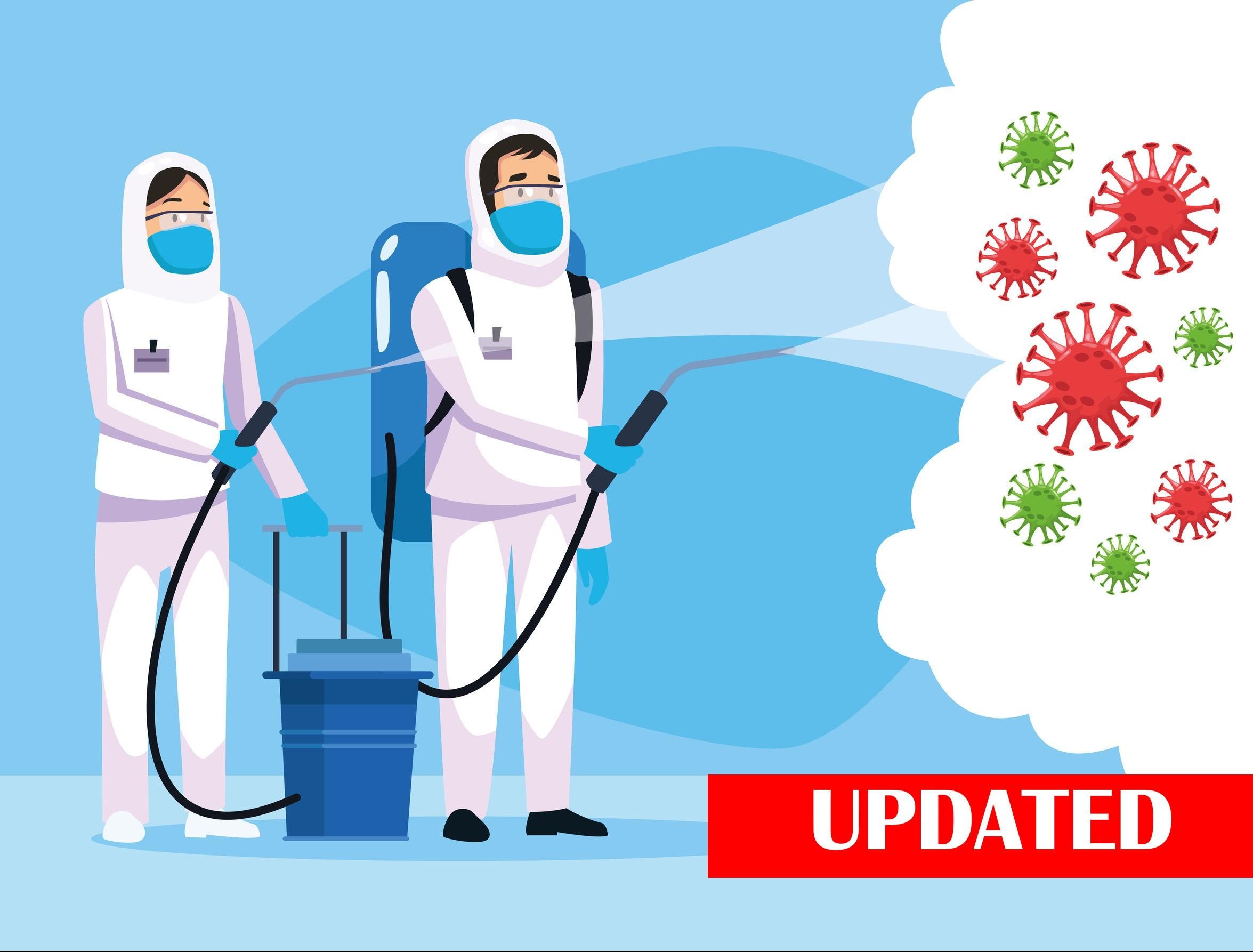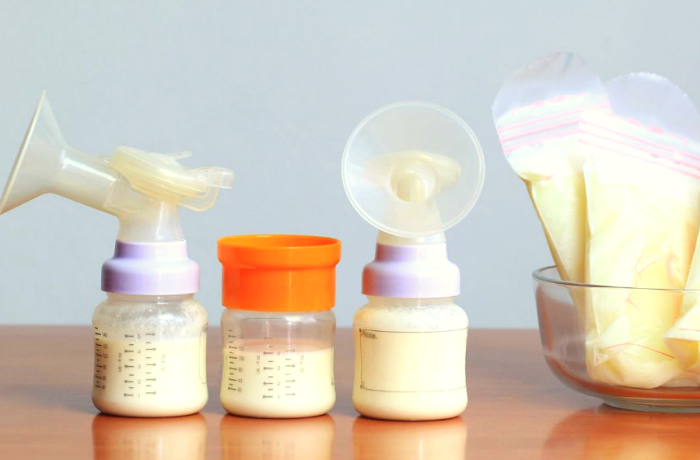Back to School 2021: An Updated Guide to Covid-Proof Your School (Infographics)
by on 02/08/2025 ...
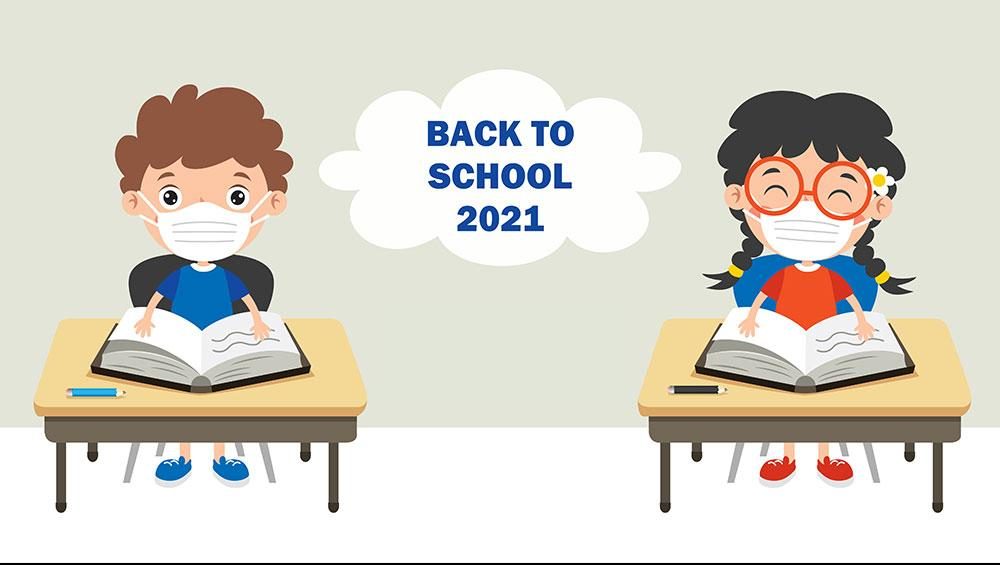
Back to school 2021 will not be the same as last year. There is evolving guidance from public health officials due to the emergence of coronavirus variants. “Vaccinated or not, all students can choose to attend school in person or continue learning from home,” says Education Minister Datuk Radzi Jidin. “The current system only allows 50 percent student capacity with alternating weeks for attendance in school. This will remain until the ministry feels it is safe enough to return with full attendance.”1

Image credit: MediaSelangor
Here’s a visual guide with updated graphics of the most-recent guidelines to help schools mitigate the spread of COVID-19 for those who will be back in person. Screening testing, good ventilation, universal indoor masking, social distancing, promoting vaccination, proper handwashing and respiratory etiquette, regular cleaning and sanitizing, contact tracing, and quarantining and isolation when sick are all important layers of prevention in order to keep everybody safe.
1. Keep all learning spaces well ventilated
It is important to ensure all learning spaces are well ventilated to reduce the number of virus particles in the air. This can be done by opening multiple windows and doors to bring fresh outdoor air into the building, using fans to increase circulation, and having air filtration systems in place to enhance air cleaning.

Image credit: Centers for disease control and prevention (CDC) / Laura Baker
2. Correct mask usage guidelines
- Indoors: Regardless of vaccination status, all individuals aged 2 years and above should wear a mask.
- Outdoors: Generally, people do not need to wear masks outdoors. However, in areas where COVID-19 cases are high, it is recommended to mask up in outdoor settings where it is difficult to maintain social distancing. For those who are not fully vaccinated, they should wear masks in crowded outdoor settings.
Teachers may need to guide young students on how to wear their masks properly as they transition from outdoors to indoors.
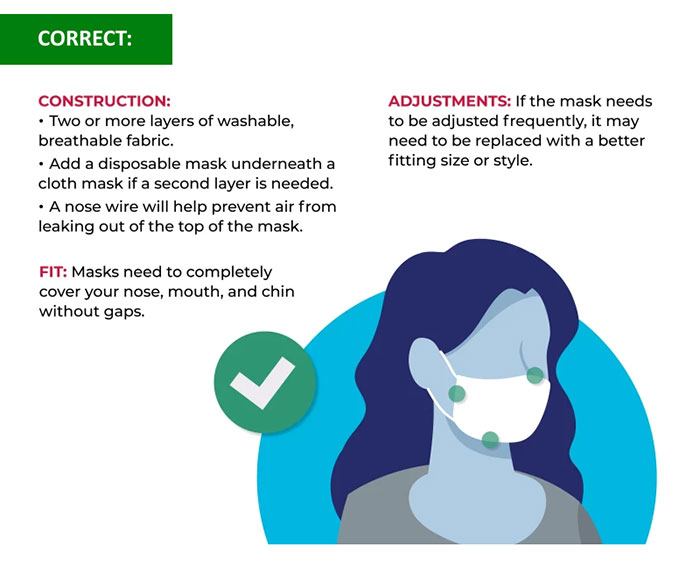
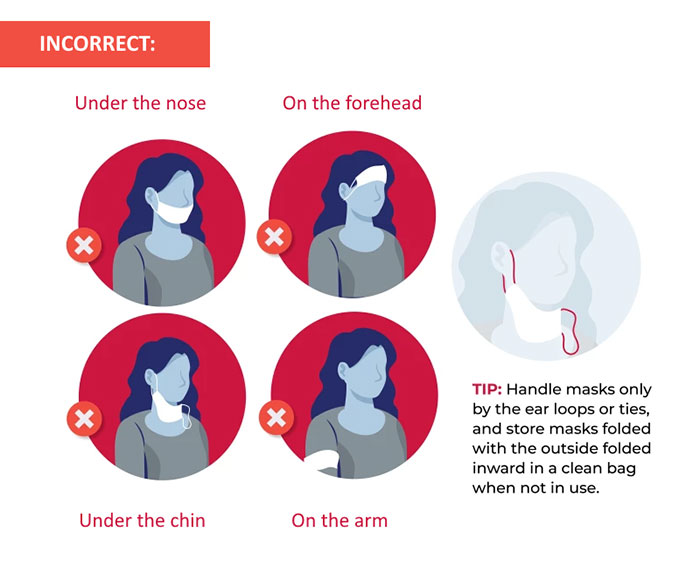
Image credit: CDC / Laura Baker
3. How to keep school buses safe?
Regardless of vaccination status, health officials recommend universal masking while boarding, riding and disembarking any school transportation, and while waiting at drop-off/pick-up points. It can be challenging for students to maintain social distancing, so, if possible, encourage families to drive their children to school to reduce the number of students on buses.

Source: U.S. National council on school facilities and cooperative strategies
4. Screening testing to promptly identify cases
Generally, everyone should screen for COVID-19 every day before going to school. Screening is a series of questions asked to determine a person’s risk for COVID-19. Questions include symptoms experienced, recent travel history and exposure to someone who is COVID-19 positive. Screenings help health care professionals determine if the person needs be tested for COVID-19.
Testing finds out if the person has COVID-19 or not. Click here to find out about the types of coronavirus tests available and how to prepare children for the swabs.
|
Recommendations to screen for COVID-19 |
||||
|
|
Low transmission1 zone (0-9 cases) |
Moderate transmission zone (10-49 cases) |
Substantial transmission zone (50-99 cases) |
High transmission zone (>100 cases) |
|
Students |
Do not need to screen students. |
Offer screening testing for students who are not vaccinated at least once every week. |
||
|
Teachers & staff
|
Offer screening testing for teachers and staff who are not vaccinated at least once every week. |
|||
|
High-risk sports/activities
|
Recommend screening testing for high-risk sports and extracurricular activities2 for participants who are not vaccinated at least once every week. |
Recommend screening testing for high-risk sports and extracurricular activities for participants who are not vaccinated at least twice every week. |
Cancel or hold high-risk sports or extracurricular activities online, unless participants are fully vaccinated. |
|
|
Low- & intermediate-risk sports/activities |
Do not need to screen participants. |
Recommend screening testing for low- and intermediate-risk sports and extracurricular activities3 for participants who are not vaccinated at least once every week. |
||
Source: CDC
1 Levels of community transmission defined as total new cases per 100,000 people in the past 7 days (Low 0-9 cases; Moderate 10-49 cases; Substantial 50-99 cases; High >100 cases).
2 High-risk sports and activities are those in which increased exhalation occurs. For example, band, choir, theatre, rugby, football, hockey or club meetings, especially when held indoors.
3 Examples for low- and intermediate-risk sports include outdoor exercise like running, biking or baseball.
5. When is contact tracing necessary?

Image credit: CDC / Gina Tornko
6. When to quarantine?
- If asymptomatic, fully vaccinated close contacts do not need to quarantine following an exposure. They can continue attending school in person but should wear a mask in indoor settings for 14 days or until they receive a negative test result for COVID-19.
- For individuals who are not fully vaccinated, they should quarantine at home for 14 days after exposure, regardless of COVID-19 test result. However, there are options to reduce quarantine using symptom monitoring and diagnostic testing.
- Exception: In indoor classroom settings, the close contact definition excludes students who were within 3-5 feet of an infected student if both the infected student and exposed student(s) correctly wore well-fitting masks the entire time.
(This exception does not apply to teachers or other adults in the indoor classroom)
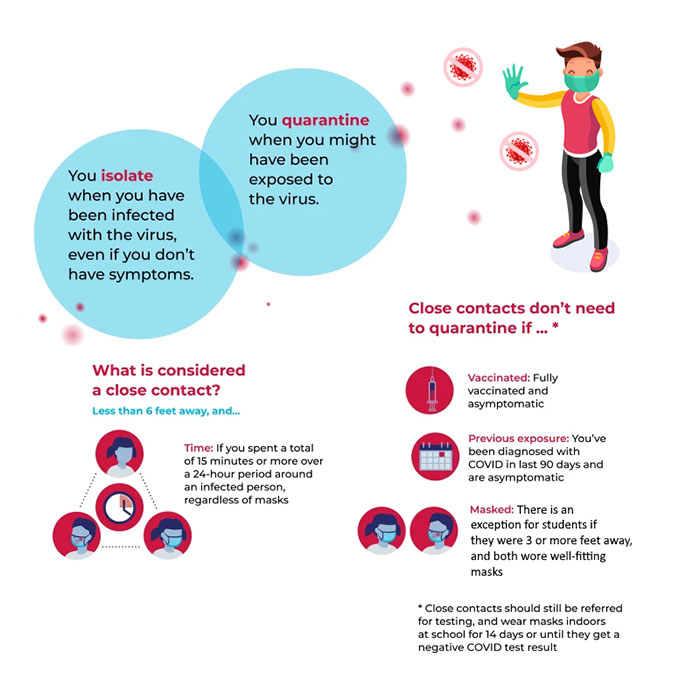
Image credit: CDC / Laura Baker & Gina Tornko
7. Emergency operations plan
Every school should have an Emergency Operations Plan (EOP) in place to curb the spread of COVID-19. The EOP should:
- Describe COVID-19 prevention strategies to be implemented.
- Describe policy differences for those who are vaccinated and those who are not.
- Describe steps to take when someone in the school has COVID-19 symptoms or test positive for COVID-19.
- Be developed to comply with the latest state regulations.

















